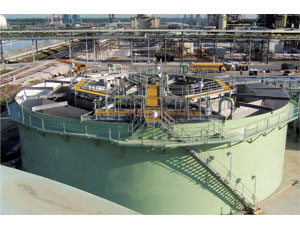Groundwater and airborne volatile organic compound emissions are regulated by myriad rules from the U.S. Environmental Protection Agency. Industrial owners complying with EPA rules generally treat airborne emissions by using activated carbon filters and burning the residue. Waterborne emissions are frequently treated through biotreatment with organisms.

Why not consolidate the approach, says Carl Adams, global leader for industrial wastewater treatment at ENVIRON International. “Why have two processes to treat one problem?” he asks. ENVIRON launched its VOC BioTreat� process in 2010, which pipes biodegradable airborne VOCs into the biotreatment plant treating waterborne VOCs.
“Clients have always had biotreatment plants to treat the water. You just let the bacteria eat the VOCs,” says Adams. The new ENVIRON process uses existing bioplant equipment and avoids the additional costs of carbon incinerators and the filtration process. Further, there are minimal CO2 emissions with the new proprietary process, Adams says.
EPA has approved ENVIRON's VOC BioTreat as an alternative control device for VOCs, and the process has been installed successfully at the Marathon Oil refinery in Garyville, La. The American Academy of Environmental Engineers awarded VOC BioTreat its Grand Prize for Research on March 3.
“Every major plant that has a bioplant can use this system,” so VOC BioTreat is not expensive to design and install and the operating costs are minimal compared with the old system, says Tom Vetrano, COO of Environ.
Since VOC emission control is an issue at most refinery, chemical and pharmaceutical plants and steel mills, this innovative process could be a real game-changer.


Post a comment to this article
Report Abusive Comment